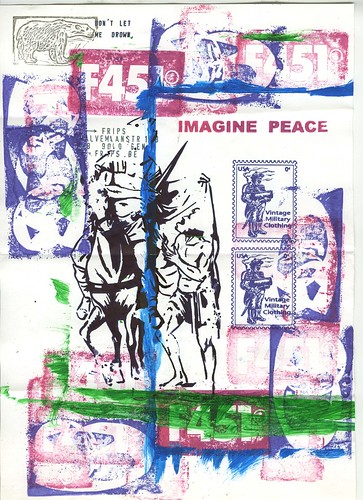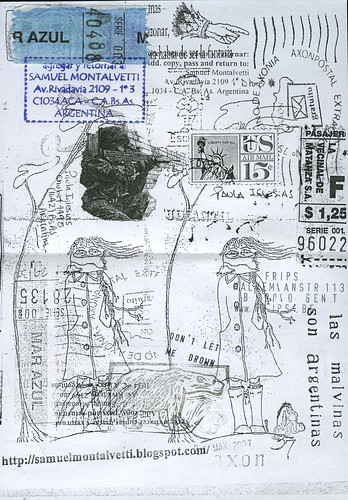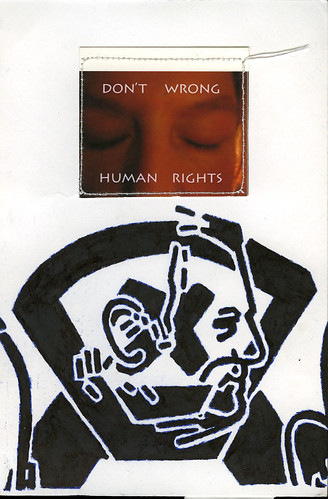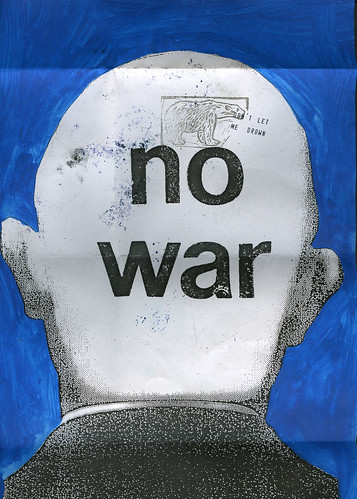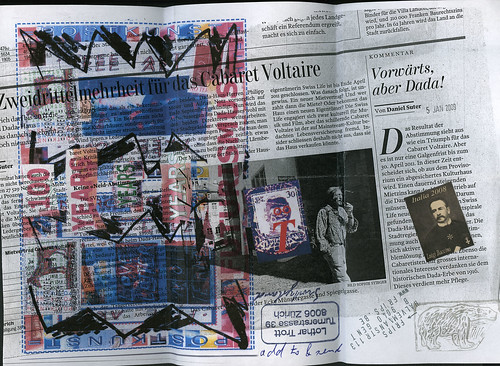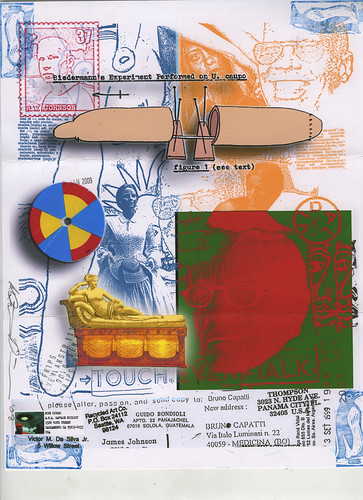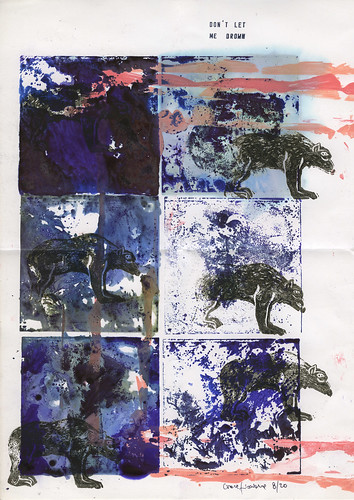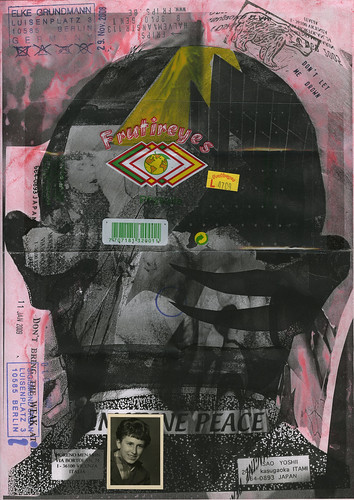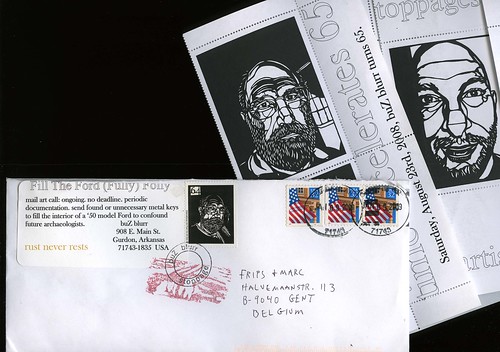Friday, January 30, 2009
Wednesday, January 28, 2009
Monday, January 26, 2009
Thursday, January 22, 2009
Tuesday, January 20, 2009
Saturday, January 17, 2009
Johannes J. Musolf
i just found out through the net that mail artist friend Johannes J. Musolf died last october.
he was a wonderful artist and "objektenmacher"; look here for his work
he was a wonderful artist and "objektenmacher"; look here for his work
Surrealism/ Mail Art Call /Modesto Art Museum
International Surrealism Festival
Surrealism: The Cutting Edge of Art
link
Surrealism Main Page
Mail Art Exhibition and Participants
What is Mail Art?
Surrealism Mail Art Call
Theme: Surrealism, Surrealismo, pop surrealism, historic, contemporary, and future surrealism, Dada, neo-Dada, surreal artists, etc.
Format: Envelopes, post cards, stamps, and packages using collage, drawing, paint, construction, sculpture, computer generations, photography, mixed media, etc. See what is mail art for more details. No size limit.
Deadline for all entries: 13 February 2009
Exhibition: 2-28 March 2009, Mistlin Gallery, Modesto, California.
Documentation: to all adult participants plus listing on museum web site.
Return: none
Note: Include your mailing address and/or email address on/in your entry for acknowledgment.
Send Entries to:
Surrealism
Modesto Art Museum
404 Patrick Lane
Modesto, CA 95350 USA
Questions: modestoartmuseum@yahoo.com
Surrealism: The Cutting Edge of Art
link
Surrealism Main Page
Mail Art Exhibition and Participants
What is Mail Art?
Surrealism Mail Art Call
Theme: Surrealism, Surrealismo, pop surrealism, historic, contemporary, and future surrealism, Dada, neo-Dada, surreal artists, etc.
Format: Envelopes, post cards, stamps, and packages using collage, drawing, paint, construction, sculpture, computer generations, photography, mixed media, etc. See what is mail art for more details. No size limit.
Deadline for all entries: 13 February 2009
Exhibition: 2-28 March 2009, Mistlin Gallery, Modesto, California.
Documentation: to all adult participants plus listing on museum web site.
Return: none
Note: Include your mailing address and/or email address on/in your entry for acknowledgment.
Send Entries to:
Surrealism
Modesto Art Museum
404 Patrick Lane
Modesto, CA 95350 USA
Questions: modestoartmuseum@yahoo.com
Friday, January 16, 2009
Thursday, January 15, 2009
George Brecht died
George Brecht, 82, Fluxus Conceptual Artist, Is Dead
Jan 08, 2009 By KEN JOHNSON
George Brecht, a core member of Fluxus, the loosely affiliated international group of playful Conceptual artists that emerged in the early 1960s, died on Dec. 5 in Cologne, Germany. He was 82 and lived in Cologne.
He died in his sleep, said Geoffrey Hendricks, a friend, who was also a Fluxus member. He had been in failing health for several years.
Mr. Brecht came of age as an artist in the late 1950s, when Abstract Expressionism and the cult of the heroic creative genius were ascendant. Inspired by the Conceptual art of Marcel Duchamp and the experimental music of John Cage, he began to imagine a more modest, slyly provocative kind of art that would focus attention on the perceptual and cognitive experience of the viewer.
George Brecht performing his "Incidental Music" in Amsterdam in 1961. Many of his "pieces" consisted just of instructions.
American, European and Asian artists who were thinking along similar lines included Dick Higgins, Alison Knowles, Ben Vautier, Nam June Paik and George Maciunas, who in 1962 came up with the name Fluxus for this confederation of like-minded Conceptualists.
Like many other Fluxus artists, Mr. Brecht created assemblages consisting of ordinary objects in boxes and cabinets, as well as arrangements that often included chairs. He also made paintings and sculptures that played with language, like a piece with white plastic letters spelling "sign of the times."
His most important and original contribution was a form he called the "event score," which typically was printed on a small white card that he would mail to friends. The event score consisted of a title followed by eccentric instructions. The directive for "String Quartet," for example, read simply, "Shaking hands." The musicians would perform it by doing just that.
One of his most famous pieces was "Drip Music," in which "a source of water and an empty vessel are arranged so that the water falls into the vessel." Performances of "Drip Music" can be seen on Youtube.com.
He created event scores for sculptures as well. Instructions for "Three Arrangements," for example, read, "on a shelf/on a clothes tree/black object white chair."
Mr. Brecht said that he did not care if any of his event scores were realized and that he did not think that there was a correct way to perform one. He once wrote that his events were "like little enlightenments I wanted to communicate to my friends who would know what to do with them."
Mr. Brecht was born George MacDiarmid on Aug. 27, 1926, in New York. His father, a flutist who played in the Metropolitan Opera Orchestra and the NBC Radio Orchestra, died when his son was 8. Mr. Brecht changed his last name to Brecht - not in reference to Bertolt Brecht, but because he liked the sound of the name - around 1945 while serving in the United States Army in Germany.
After the war Mr. Brecht studied chemistry at the Philadelphia College of Pharmacy and Science in Philadelphia, and he supported himself as a research chemist from 1950 to 1965.
In the mid-1950s, following the lead of Jackson Pollock, Mr. Brecht produced paintings using chance operations and materials like bed sheets, ink and marbles. In 1958-59, he attended a class in experimental music composition taught by John Cage at what was then the New School for Social Research in New York. Soon he was producing compositions even more radical than those of Mr. Cage.
In the early 1960s, Mr. Brecht taught in what was then the unusually progressive art department of Rutgers University, along with Mr. Hendricks, Allan Kaprow (who became known as an inventor of the "happening") and Robert Watts, who also became a Fluxus artist.
Mr. Brecht's first solo exhibition, "Toward Events: An Arrangement," was at Reuben Gallery in New York in 1959. During the next five years, he participated in many group exhibitions and performances in New York. His work "Repository" (1961), a wall cabinet containing a pocket watch, a thermometer, rubber balls, toothbrushes and other objects, was included in "The Art of Assemblage," the famous 1961 exhibition at the Museum of Modern Art, and the museum later bought it. Nine years later, Mr. Brecht was included in "Information," another landmark show at the Modern.
In 1965, Mr. Brecht left New York. He lived in Rome, the South of France, London and D¨¹sseldorf, Germany, before settling in Cologne in 1972.
He is survived by his wife, Hertha, and a son, Eric, who lives in Southern California.
Mr. Brecht's work was especially appreciated in Europe. He was included in Documenta, the giant exhibition in Kassel, Germany, in 1972 and 1977. In 2005 the Museum Ludwig in Cologne organized a comprehensive career retrospective, which traveled to the Museum of Contemporary Art in Barcelona.
Mr. Brecht once described his art as a way of "ensuring that the details of everyday life, the random constellations of objects that surround us, stop going unnoticed."
[From The New York Times]
Jan 08, 2009 By KEN JOHNSON
George Brecht, a core member of Fluxus, the loosely affiliated international group of playful Conceptual artists that emerged in the early 1960s, died on Dec. 5 in Cologne, Germany. He was 82 and lived in Cologne.
He died in his sleep, said Geoffrey Hendricks, a friend, who was also a Fluxus member. He had been in failing health for several years.
Mr. Brecht came of age as an artist in the late 1950s, when Abstract Expressionism and the cult of the heroic creative genius were ascendant. Inspired by the Conceptual art of Marcel Duchamp and the experimental music of John Cage, he began to imagine a more modest, slyly provocative kind of art that would focus attention on the perceptual and cognitive experience of the viewer.
George Brecht performing his "Incidental Music" in Amsterdam in 1961. Many of his "pieces" consisted just of instructions.
American, European and Asian artists who were thinking along similar lines included Dick Higgins, Alison Knowles, Ben Vautier, Nam June Paik and George Maciunas, who in 1962 came up with the name Fluxus for this confederation of like-minded Conceptualists.
Like many other Fluxus artists, Mr. Brecht created assemblages consisting of ordinary objects in boxes and cabinets, as well as arrangements that often included chairs. He also made paintings and sculptures that played with language, like a piece with white plastic letters spelling "sign of the times."
His most important and original contribution was a form he called the "event score," which typically was printed on a small white card that he would mail to friends. The event score consisted of a title followed by eccentric instructions. The directive for "String Quartet," for example, read simply, "Shaking hands." The musicians would perform it by doing just that.
One of his most famous pieces was "Drip Music," in which "a source of water and an empty vessel are arranged so that the water falls into the vessel." Performances of "Drip Music" can be seen on Youtube.com.
He created event scores for sculptures as well. Instructions for "Three Arrangements," for example, read, "on a shelf/on a clothes tree/black object white chair."
Mr. Brecht said that he did not care if any of his event scores were realized and that he did not think that there was a correct way to perform one. He once wrote that his events were "like little enlightenments I wanted to communicate to my friends who would know what to do with them."
Mr. Brecht was born George MacDiarmid on Aug. 27, 1926, in New York. His father, a flutist who played in the Metropolitan Opera Orchestra and the NBC Radio Orchestra, died when his son was 8. Mr. Brecht changed his last name to Brecht - not in reference to Bertolt Brecht, but because he liked the sound of the name - around 1945 while serving in the United States Army in Germany.
After the war Mr. Brecht studied chemistry at the Philadelphia College of Pharmacy and Science in Philadelphia, and he supported himself as a research chemist from 1950 to 1965.
In the mid-1950s, following the lead of Jackson Pollock, Mr. Brecht produced paintings using chance operations and materials like bed sheets, ink and marbles. In 1958-59, he attended a class in experimental music composition taught by John Cage at what was then the New School for Social Research in New York. Soon he was producing compositions even more radical than those of Mr. Cage.
In the early 1960s, Mr. Brecht taught in what was then the unusually progressive art department of Rutgers University, along with Mr. Hendricks, Allan Kaprow (who became known as an inventor of the "happening") and Robert Watts, who also became a Fluxus artist.
Mr. Brecht's first solo exhibition, "Toward Events: An Arrangement," was at Reuben Gallery in New York in 1959. During the next five years, he participated in many group exhibitions and performances in New York. His work "Repository" (1961), a wall cabinet containing a pocket watch, a thermometer, rubber balls, toothbrushes and other objects, was included in "The Art of Assemblage," the famous 1961 exhibition at the Museum of Modern Art, and the museum later bought it. Nine years later, Mr. Brecht was included in "Information," another landmark show at the Modern.
In 1965, Mr. Brecht left New York. He lived in Rome, the South of France, London and D¨¹sseldorf, Germany, before settling in Cologne in 1972.
He is survived by his wife, Hertha, and a son, Eric, who lives in Southern California.
Mr. Brecht's work was especially appreciated in Europe. He was included in Documenta, the giant exhibition in Kassel, Germany, in 1972 and 1977. In 2005 the Museum Ludwig in Cologne organized a comprehensive career retrospective, which traveled to the Museum of Contemporary Art in Barcelona.
Mr. Brecht once described his art as a way of "ensuring that the details of everyday life, the random constellations of objects that surround us, stop going unnoticed."
[From The New York Times]
Tuesday, January 13, 2009
Friday, January 09, 2009
2009
as of 2009, i won't be posting all the mail that i receive any longer.
i am still a mail arter and nothing has changed in that respect.
it's all in the (snail)mail!
i only can no longer scann and blog everything.
i will occasionally blog new calls from others and if time permits i will upload
news and facts...
stay well and keep mailarting!!!
frips
i am still a mail arter and nothing has changed in that respect.
it's all in the (snail)mail!
i only can no longer scann and blog everything.
i will occasionally blog new calls from others and if time permits i will upload
news and facts...
stay well and keep mailarting!!!
frips
Subscribe to:
Comments (Atom)

Blog Archive
-
►
2013
(95)
- September (1)
- July (3)
- June (12)
- May (23)
- April (14)
- March (12)
- February (15)
- January (15)
-
►
2012
(253)
- December (18)
- November (24)
- October (25)
- September (10)
- August (38)
- July (20)
- June (19)
- May (33)
- April (18)
- March (26)
- February (13)
- January (9)
-
►
2011
(608)
- December (33)
- November (73)
- October (53)
- September (53)
- August (37)
- July (43)
- June (39)
- May (46)
- April (55)
- March (75)
- February (59)
- January (42)
-
►
2010
(603)
- December (58)
- November (63)
- October (64)
- September (36)
- August (19)
- July (52)
- June (33)
- May (41)
- April (48)
- March (56)
- February (42)
- January (91)
-
▼
2009
(487)
- December (47)
- November (67)
- October (82)
- September (66)
- August (72)
- July (37)
- June (15)
- May (15)
- April (12)
- March (29)
- February (25)
- January (20)
-
►
2008
(1187)
- December (96)
- November (116)
- October (180)
- September (127)
- August (10)
- July (92)
- June (96)
- May (123)
- April (96)
- March (90)
- February (101)
- January (60)
-
►
2007
(678)
- December (43)
- November (60)
- October (41)
- September (47)
- August (42)
- July (60)
- June (47)
- May (49)
- April (43)
- March (72)
- February (58)
- January (116)
-
►
2006
(878)
- December (59)
- November (60)
- October (75)
- September (69)
- August (97)
- July (62)
- June (84)
- May (88)
- April (71)
- March (87)
- February (56)
- January (70)
MORE MAIL-ART RELATED BLOGS
- 84 Rooms!
- A1 mailart
- bentspoon
- boklist
- Bridie Knight
- Bruno Capatti
- brutus
- buZ blurr
- cascadia artpost
- Collagemania
- Crescent House
- David-Baptiste Chirot
- DrFluxbuxstein
- Ed Giecek
- False Adddress
- fatredant
- Flobberlob
- Fluxlist
- GDP's mailart project
- Geof Huth
- Gracia
- Guido Vermeulen
- Haje Holmström
- Hannah Doyle
- Hans van Heirseele en Sjoerd Paridaen
- Haven't-Garde Art
- Hazel
- Homo Volans
- http://www.theartistsbooks.blogspot.com/
- Incredible Green Cat Company
- Iuoma Ruud Janssen
- Ivan Zemtsov's mailart project
- Janey's Journey
- Jim Leftwich
- Joseph W Huber
- Juana la Loca netzine
- Jukka-Pekka Kervinen
- Keith Bates
- Kiyotei
- Latuff
- Laura Barletta
- Lezbag
- Lindall
- Louise
- Mailboxes
- mayu
- Mick Boyle
- MOJARO MAILART
- neodada
- Pati Bristow
- Pierpaolo Limongelli
- RF Côté
- Ross Priddle
- Sharon Zimmer
- Sideshowpost
- Sidney Tome
- Sinepress
- Small Art
- The Five Million Copies Project
- torben doose
- Trafico Artecorreo
- Troy Thomas
- Wackystuff
- Wallofsound
- William A
- William A.
- William Philyaw
flickr
www.flickr.com
This is a Flickr badge showing items in a set called synthetic carvings. Make your own badge here.
